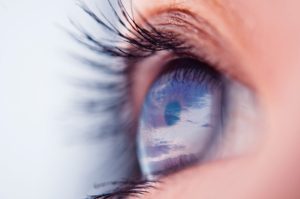Doctors Allergy Formula Testing for Eye Allergies
October 16, 2015Treatments for Farsightedness: Bringing the World Into Focus
December 16, 2015Nearsightedness, clinically known as myopia, is a condition in which patients have difficulty seeing distant objects clearly. This can make it difficult to read road signs when driving, or to see chalkboards or projectors clearly in classrooms. Traditionally, glasses and contact lenses have been used to treat nearsightedness. Today, laser vision correction procedures such as LASIK and PRK can also be performed to permanently improve a patient’s vision and reduce or eliminate their need for visual aids. At Laser Vision Correction Center of New Jersey, Dr. Kenneth S. Miller offers various surgical treatments for nearsightedness. Contact our West Orange, NJ practice today to find out if surgical or non-surgical treatment is right for you.
Glasses
Glasses are well suited to children, teens, and adults that suffer from nearsightedness. The prescription lenses bring distant objects into focus, and the lenses can be easily switched out if a patient’s prescription changes. Glasses are the most simple treatment option, and they are affordable. However, some patients don’t like the way they look in glasses, want improved peripheral vision, and get frustrated when glasses are misplaced.
Contact Lenses
Contact lenses can be inserted into the eyes each morning to provide patients with improved vision. Contacts are relatively easy to place, and they are not too costly. They also eliminate the drawbacks associated with glasses, but they come with their own disadvantages. Many patients don’t want to take the time to insert, remove, and clean contact lenses on a daily basis. In addition, they may be uncomfortable for some patients to wear.
LASIK
LASIK permanently changes the shape of the cornea to correct vision. Nearsightedness is caused by a steep, or overly curved, cornea, which causes light to focus in front of the retina, thereby producing blurry distant vision. Rather than compensating for this steepness, LASIK actually flattens the cornea so light focuses directly on the retina.
During LASIK, an incision is made in the cornea, creating a hinged flap that can be opened and then closed. Dr. Miller can create the incision using a microkeratome or the Intralase® laser. When the flap is open, an excimer laser is used to reshape the cornea to the desired curvature, thus producing clear vision. The flap is then closed and allowed to heal on its own.
PRK
PRK is similar to LASIK in that the cornea is reshaped. However, during PRK surgery, the outer layer of the cornea, the epithelium, is removed. The cornea is then reshaped with an excimer laser. Finally, special contact lenses are placed in the eyes to promote healing and regeneration of the epithelial layer.
Patients can opt to undergo custom LASIK or PRK surgery. With the custom technique, wavefront technology is used to produce a three-dimensional map of each eye. This map details lower and higher order aberrations that affect vision. In traditional LASIK and PRK surgery, only the lower order aberrations are treated. With the custom technique, higher order aberrations are addressed, improving the quality of the patient’s vision.
Are you interested in learning more about your treatment options for nearsightedness? Contact our practice today to schedule a consultation.



